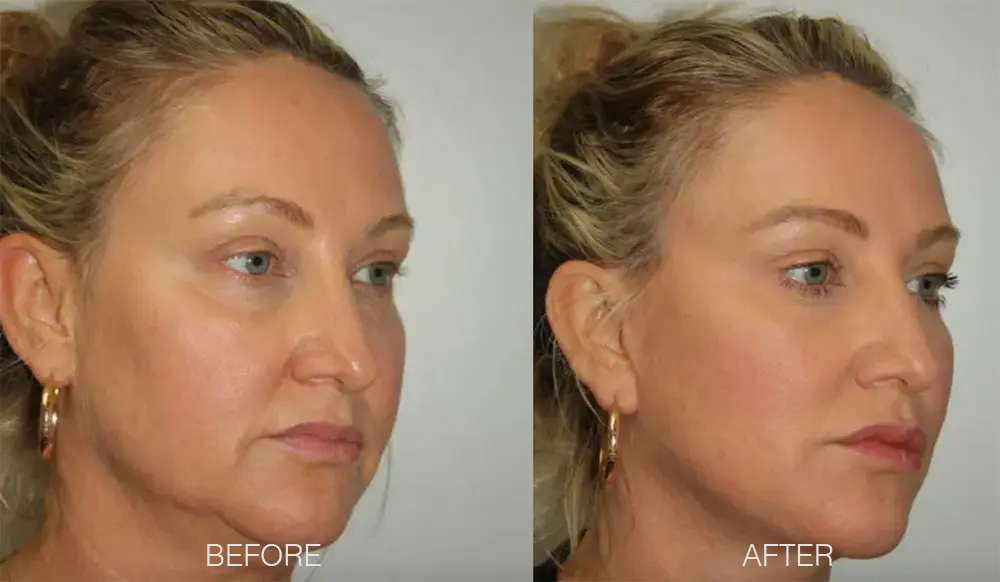Deep Plane Facelift Recovery Guide
Posted March 31, 2025 in Facelift

The deep plane facelift is an advanced facial rejuvenation technique that offers long-lasting, natural-looking enhancement by lifting and repositioning deeper facial tissues. While the results are often transformative, the recovery process can be different from traditional facelift techniques, such as the SMAS facelift or a mini facelift. Understanding what to expect during the deep-plane facelift recovery process can help patients feel more prepared and confident as they heal. In this blog, we’ll explore the recovery timeline, how it compares to other facelift techniques, and key strategies for a smooth healing process.
What Makes Deep Plane Facelift Recovery Different?
Unlike other facelifts that primarily tighten skin and superficial muscles, a deep plane facelift goes beneath the SMAS layer to reposition the deeper facial structures, including ligaments and fat pads. This technique achieves more dramatic and longer-lasting results, but it also requires a different recovery process.
Key Differences in Recovery Compared to Other Facelifts:
- More Natural Outcome: Unlike a SMAS facelift, where skin tightening is a primary focus, the deep plane facelift reduces skin tension, leading to a more comfortable recovery and natural-looking results.
- Initial Swelling: Maximum swelling typically occurs on the second day after surgery. The initial swelling can be slightly more than a SMAS facelift, but it does diminish significantly in 10–14 days.
- Downtime: Although the patients are socially presentable about two weeks after surgery, the refined appearance can take two to three months to materialize.
Deep Plane Facelift Surgery Recovery Day by Day
Preoperative Visit
You will meet with Dr. Ackerman and his team about two weeks before surgery. This can be in person or virtual. The surgical plan, preoperative preparation, and thorough personalized instructions will be provided.
Day One
After your deep plane facelift, you will wake up in the recovery area and feel a bit groggy. Most patients undergo this procedure using twilight sleep. You can expect to:
- Be wearing a head dressing or light compression garment to minimize swelling
- Be monitored and examined before being discharged with essential instructions
- Be driven home and assisted by a friend or family member for at least 24–48 hours
- Experience some bruising, swelling, and mild discomfort, which can be managed with prescribed pain medication
- Feel some facial tightness and numbness
Focus on resting, eating light, healthy meals, and staying hydrated for the first 48 hours.
Days Two and Three
Have someone drive you to the office for your first follow-up visit. Drains may have been placed to prevent fluid buildup in the tissues and are typically removed within two days. If your surgeon determines you need continued assistance, arrange for someone to stay with you for another 24 hours and check in with them the following day. If your doctor approves, you can shower now.
- Take short showers and gently pat your skin dry
- Use a gentle soap and shampoo for the first two weeks
- Avoid hot water, hair dyes, relaxers, and permanents
- Cover incision sites, and don’t rub them
Avoid lifting and strenuous activity, follow incision care instructions carefully throughout your recovery, and keep your head elevated at all times. Many surgeons recommend lymphatic massage to reduce swelling and improve circulation.
Days Four Through Seven
You should take short walks around your home or yard, but don’t overdo it. Continue taking good care of yourself. Swelling peaks within the first four days and then gradually starts improving. Sutures may be removed between days five and seven, depending on your surgeon’s protocol.
Week Two
Bruising may still be visible around the cheeks, jawline, and neck but will continue to fade, and swelling will have subsided substantially. You should be starting to feel much better, and you may feel comfortable going out in public with light makeup to conceal any residual discoloration. Some tightness or mild numbness may persist, especially around the ears and jawline.
Light physical activity, such as longer walks, cycling, and yoga, can and should be resumed, but not strenuous exercise. You might be cleared to return to work if your job does not require physical exertion.
Weeks Three to Four
Your face may still feel slightly firm, but this sensation improves as healing progresses, and you’ll be able to see your new, more youthful facial contours. Incisions continue to fade, and scar care treatments may be recommended by your surgeon.
Week Five of Deep Plane Facelift Recovery and Beyond
Tightness, stiffness, and the last traces of swelling subside, and the final results become more apparent. Patients usually feel completely back to normal and can resume all forms of exercise.
Deep Plane Facelift Recovery Before and After
Deep plane facelift results improve gradually over several months. Swelling and mild numbness are normal and will resolve in time. Most patients undergo a deep plane facelift to achieve comprehensive, natural-looking, and long-lasting results.

You can expect the following enhancements to the cheeks, jawline, and neck after a deep plane facelift:
- Restored volume
- Youthful contours
- Tighter skin
- Fewer wrinkles
5 Tips for Deep Plane Facelift Recovery
Strictly adhere to all postoperative instructions for a smooth recovery and the best possible results, sleep with your head elevated at a 30-to-45-degree angle to reduce swelling, and follow these additional tips:
- Avoid strenuous activity
- Use cold compresses for swelling
- Eat a nutritious, anti-inflammatory diet
- Stay hydrated
- Avoid alcohol and don’t smoke
Deep Plane Facelift Scars
Scars are inevitable after surgery, but thankfully, the deep plane technique uses smaller, discreetly placed incisions hidden inside the tragus or behind the ears. You can minimize scars by following post-op instructions and using silicone scar strips or other products proven to help scars fade.
Deep Plane Facelift Specialist in Newport Beach, CA
Dr. Boris Ackerman is a deep plane facelift expert and developed the Ackerman Face Lift Retractor to improve the procedure. Schedule your consultation by calling (949) 759-3284 today or filling out our online contact form, and achieve the natural and long-lasting results of a deep plane facelift in Newport Beach, California.

